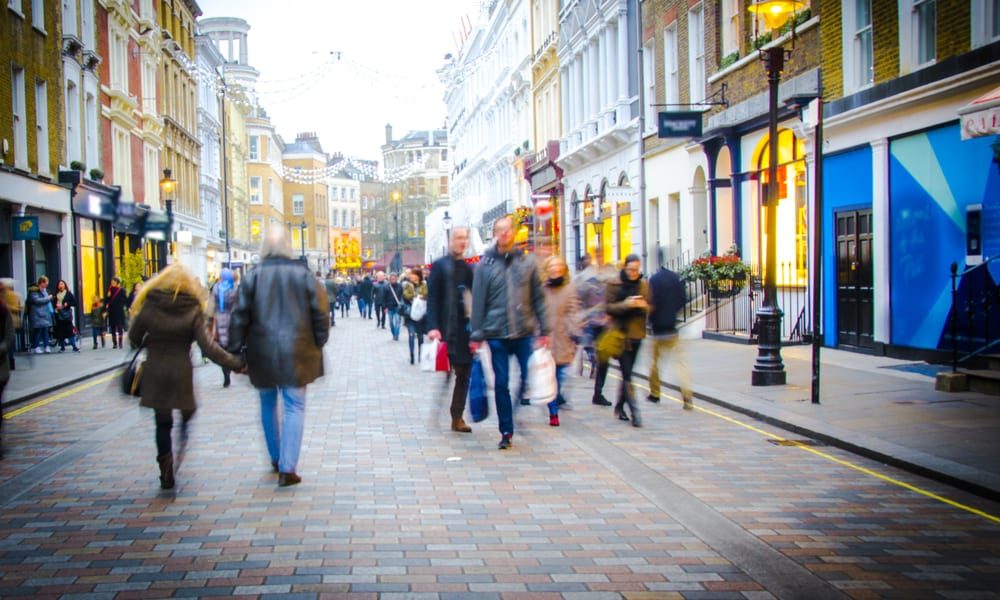The British High Street is continuing to diminish, and as the crisis persists, the high street as we know it may soon become obsolete, with both independent and chain stores feeling the effects.
Mary Portas the queen of retail and the person David Cameron trusted with the review of our high street twelve years ago says we need “less retail but better retail”. You can read the actual review here
Ms Portas is asking the Government to give more support to our high street. Almost 97 percent of retailers feel that the Government is simply not providing enough support.
Expert observers in retail have warned that retailers are battling a storm of pressures, with more closures expected through the coming years, so here are just some of the reasons why the UK High Street is continuing to fall.
Squeezed Incomes
Rising shop prices and general inflation has led to a decline in discretionary spending. With a near 15% fall in the pound since the Brexit vote and other pressures inflation has been pushed to well over 10%. This is well above the Bank of England’s 2% target.
The effect of this has meant imported goods are more expensive, and as a result, these costs have been transferred to consumers.
The cost-of-living crisis is also contributing to the fact that consumers do not have much spare cash for retail therapy.
UK economists at Pantheon Macroeconomics stated that the retail sector has already been suffering from structural problems, such as the rise in online shopping and high business rates. But the increase in inflation has pinched consumer incomes in real terms, resulting in weaker growth in sales than retailers had planned for.
The Shift to Online Shopping
Online retailers such as Amazon have had a vast impact on the UK high street, as more and more consumer’s view online shopping as a cheaper and more convenient option than visiting the shops.
According to the Office of National Statistics (ONS) with the overall market not growing, it is all about market share, and nearly 30% (up from 20% in 2018) of that market is held by online players.
If retailers do not have the right online offering, and they fail to implement either value, convenience, or experience, they will struggle.
Changing Tastes
According to experts retailers are lacking in three areas of value, convenience, and experience.
They knew the retailer couldn’t be saved because its business model didn’t replicate what consumers want. This is because of the retailer’s online problem. Consumers can enter a shop and look at a product, and then look at an alternative and buy it at a cheaper price.
Rising Overheads
Inflation is not the only cost pressure retailers face. The National Minimum Wage and National Living Wage for over 23’s rises each year, increasing payroll costs.
Further to this, Business Rates increases are preventing retailers from delivering what their consumers what in an efficient and cost-effective way.
There has been continued discussion within the small business sector to reduce business rates to enable traditional retailers to compete with online traders. Freezing the business rates multiplier will keep the small business multiplier and standard multiplier at 49.9p and 51.2p respectively. It was going to rise to 52.9p and 54.2p.
The overall result of this means bills are 6% lower than without the freeze.
Too Many Shops
With trading conditions tightening, retailers cannot afford to have underperforming outlets. Yet many over expanded during high performing years, leaving them exposed.
Retailers are now taking the approach of closing underperforming stores and focusing on a smaller number of profitable stores.
What’s more, to support the high street properties the government is extending and increasing the retail, hospitality, and leisure relief from 50% to 75% for 2023-24 up to £110,000 per business.
Changes to the business rates were announced in the Autumn Statement 2022 which should help the high street.
For example, a typical small shop with a rateable value increasing from £20,000 in 2017 to
£21,500 in 2023 will receive RHL relief worth around £8,000 (subject to the £110k cash cap per business).
Too Much Debt
Because of overexpansion, many retailers are shouldering high debt burdens. Just before its collapse, Toys R Us UK faced a looming VAT debt payment deadline of £15m. It would have been unable to pay it without a cash injection from an outside investor.
All these points highlight the similar difficulty small and local independent retailers are experiencing during the decline of the UK High Street.
Contact us and we can assist you with your all your business needs and help you through these difficult times. Call or email your manager at Myers Clark.

